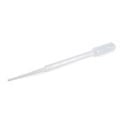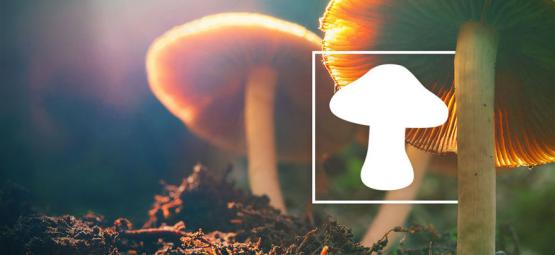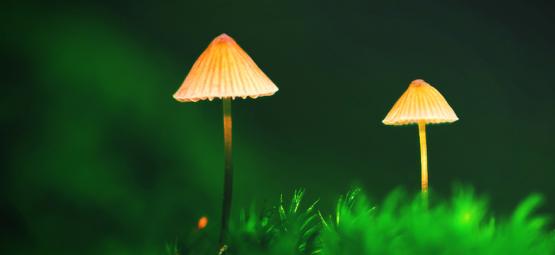How To Identify A Contaminated Magic Mushroom Culture
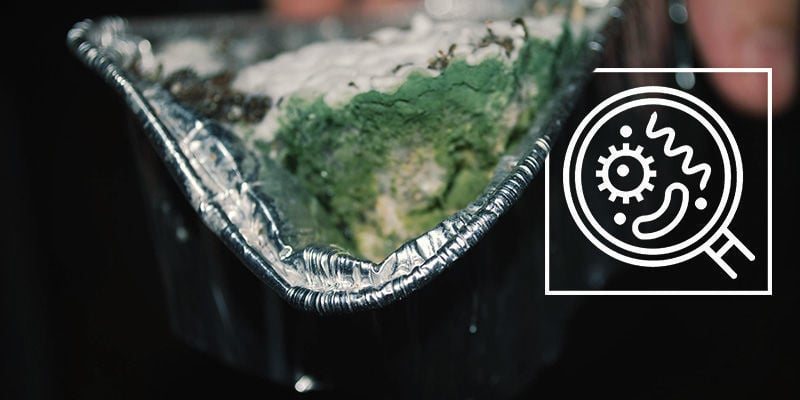
There is a wide palette of contaminations lurking out there. Most of them can be separated into three groups: Bacteria, mould (fungi) and pests. Let's take a closer look at the most common types.
Cultivating mushrooms at home isn't the easiest of tasks. It isn’t exactly rocket science, but one needs to be careful and extremely clean, as conditions should be kept sterile at all times. Every part of the magic mushroom culture is very vulnerable to contamination, including the spores, the mycelium and the mushrooms themselves.
Substrate sterilization and air filtration are ways of keeping the environment sterile and rich for the mycelium, but free of competitors such as bacteria, mould or pests. However, these methods aren’t foolproof. The mentioned processes aren’t perfect and the sterile environment has a limited duration in practice.
WHAT IS A CONTAMINATION
We can say, that a contamination is anything unwanted in your substrate or mycelium, but mainly being impurities in the air, soil or water, that can cause long-term problems with your mushroom culture. Spore contamination can prove to be fatal to the whole culture, while contamination during the fruiting phase can lead to cap removal.
Contaminations can spread very quickly, so it is best advised to get rid of the contaminated cultures and move them from the non-contaminated ones. On the bright side, contaminations are easily identified, as the mushroom mycelium is completely white.
If you see any other colours, you can expect to have a contaminated culture. But don’t be too hasty, as there are two exceptions. One is the colour blue, which indicates bruising on the mycelium, while the other is the colour yellow, which is an indicator of the mycelium getting old and producing new defences against bacteria.
Different Kinds of Contaminations
Contaminants will flourish in the sterilized substrate used for cultivating mushrooms, as they have no competition there like in nature. When mushrooms grow in the wild, the complex relationship between arrays of bacteria, fungi and such maintain an ecological equilibrium in which the mushrooms grow freely, without the need to fight with contaminants over substrate dominance.
As you see, there is a wide palette of contaminations lurking out there. Most of them can be separated into three groups: Bacteria, mould (fungi) and pests.
BACTERIA, FUNGI AND PESTS
Bacteria are unicellular microorganisms, that reproduce very fast and they can be dealt with pasteurization and sterilization of the substrate. Mold is a fungus, that grows in the form of filaments called hyphae and can be controlled with salt, baking soda, alcohol, cinnamon, etc.
And last but not least, are the pests, tiny insects, that devour your culture and transmit diseases, that affect it. Pests can be controlled with strict sanitation and an airtight grow room.
THE FIRST PHASE OF CONTAMINATION
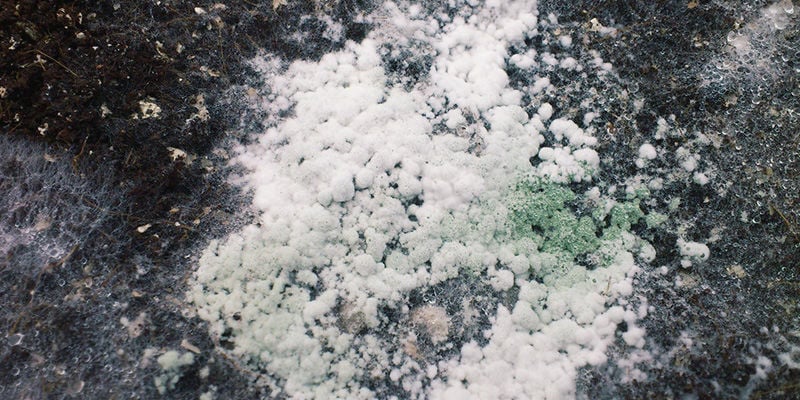
Discovering a contaminated mushroom culture can be heartbreaking. But, it’s essential to learn how to identify the early signs and act accordingly. Just because one culture or fruiting box has fallen victim to contamination doesn’t mean your entire operation has been compromised.
Discolouration is one of the most obvious signs of contamination. Many species of invasive moulds display distinct and bright colours. If you spot green, blue, grey, or black patches on or in your fruiting box, your culture is most likely contaminated. Do keep in mind, however, that small blue stains in the mycelium may just be bruising and not mould. Especially where the rye presses the mycelium against the grow box, you may see some blue spots.
It’s not just other species of fungi that will try to inhabit your substrate. Bacteria can also crash the party. The presence of bacteria is often made evident by the production of slime. Slimy patches on your grain or mycelium signify excess moisture and possible bacterial contamination. You might also notice brown and yellow stains, as well as crusty or gel-like textures.
A healthy mushroom culture will run through grain or other substrates reasonably uniformly. Hyphae will dart off in different directions, but will eventually converge to consolidate the growing medium. If you notice any sectoring—where borders form and hyphae refuse to merge—you could be dealing with contamination from another fungal species.
Unfortunately, some invasive fungi aren’t as easy to spot. Their colour and appearance make them blend into the cultivated mycelium. However, upon closer inspection, it’s possible to differentiate between them. Sporophores are one such intruder. Scan for them using a microscope. They resemble small, hair-like structures with a bubble structure on the tip.
A dusty texture can also be a sign of contamination. A powder-like substance on top of the mycelium signifies an invasion. These are only visible with a magnifying glass
So, you’ve noticed contamination—what next?
Contaminated fruiting boxes are usually a lost cause. Opening them up to remove infected tissue only poses a risk to other cultures and your lab space. However, there are some instances where you can save your mushroom cultures once contaminated. Read on to learn more about the different types of contamination, and potential solutions.
THE MOST COMMON EXAMPLES OF MUSHROOM KIT CONTAMINATIONS
Now that we have established the different types of contaminations in your mushroom culture and how to identify them, we will cover the most common examples.
WET SPOT / SOUR ROT
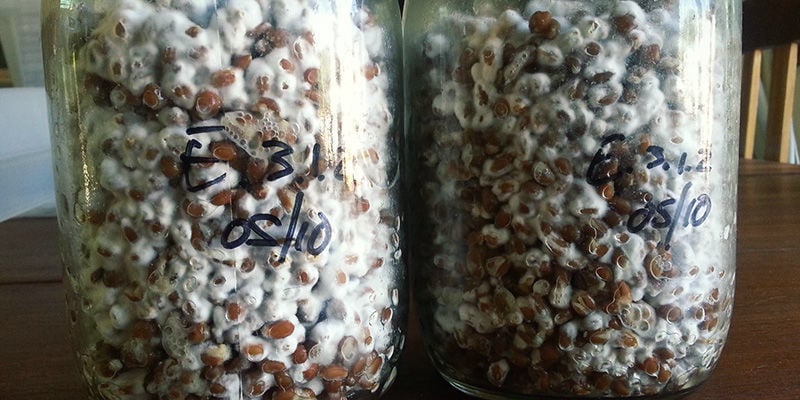
A common occurrence in grain spawn jars, the bacillus sometimes survives sterilization in the shape of endospores resistant to heat. When the medium is contaminated with bacillus, a dull gray slime is formed, that reeks with a foul stench and makes the grain look excessively wet, hence the name.
If you want to eliminate endospores from your grain you should soak it at room temperature for around a day. This way the endospores will germinate and be viable for sterilization.
BACTERIAL BLOTCH
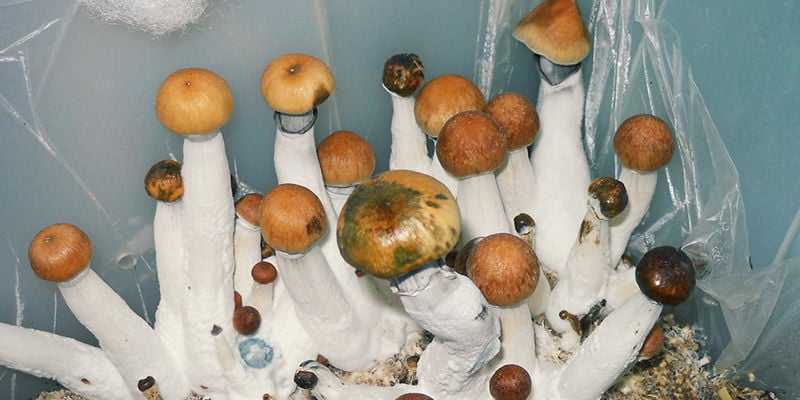
If you notice yellow to brown lesions at or near the edge of your mushroom caps, then bacterial blotch has contaminated your culture. The bacteria spreads by airborne soil particles and it occurs if your mushrooms stay wet 4 to 6 or more hours after they have been watered. It is controlled by lowering humidity and applying a 150ppm chlorine solution.
COBWEB MOLD / DACTYLIUM MILDEW
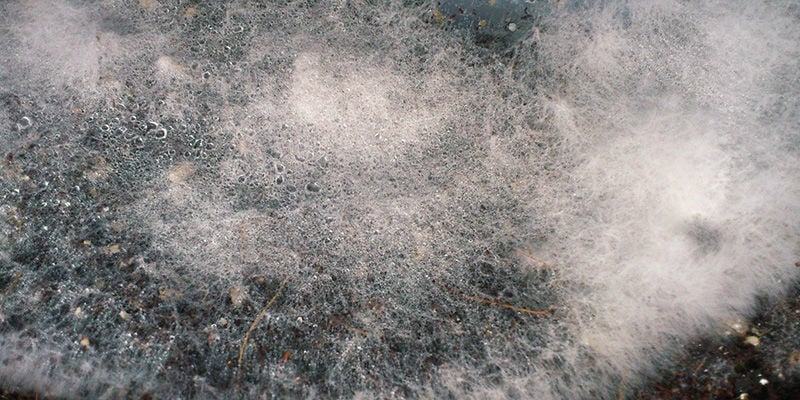
When a cottony mycelium covers your casing and envelops your mushrooms upon contact in a soft mycelium, which causes soft rot, then your culture is contaminated with cobweb mould. This mould is a little bit darker than mycelium and this slight difference in colour could go unnoticed by a beginner.
Another telltale sign is the great speed of growth, as cobweb mould will cover the whole casing in a day or two, starting from a dime-sized patch. High humidity favours this contaminant, so lowering humidity or increasing air circulation helps the problem.
GREEN MOLD
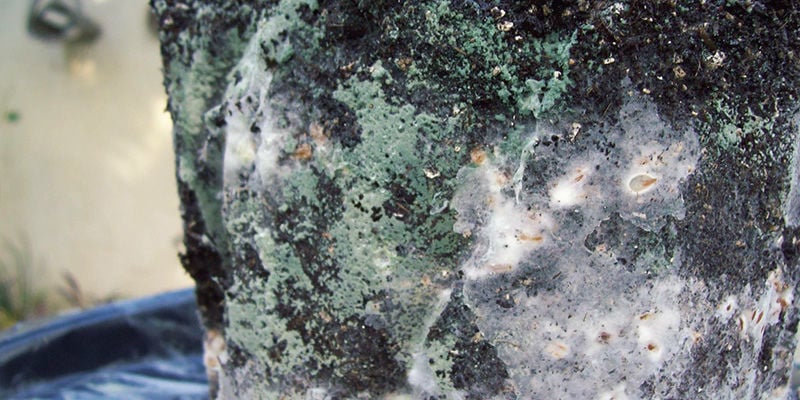
It is caused by Trichoderma harzianum and distinguished by an aggressive and white mycelium that will cover the whole casing and mushrooms, causing soft rot and producing spores, that are emerald green. Green mould is currently the most widespread disease in the US Agaricus industry.
Poor sanitation, flies, anaerobiosis and more influence the occurrence of green mould, making strict sanitation essential and the use of surface disinfectants farm-wide.
PINK MOLD / RED BREAD MOLD
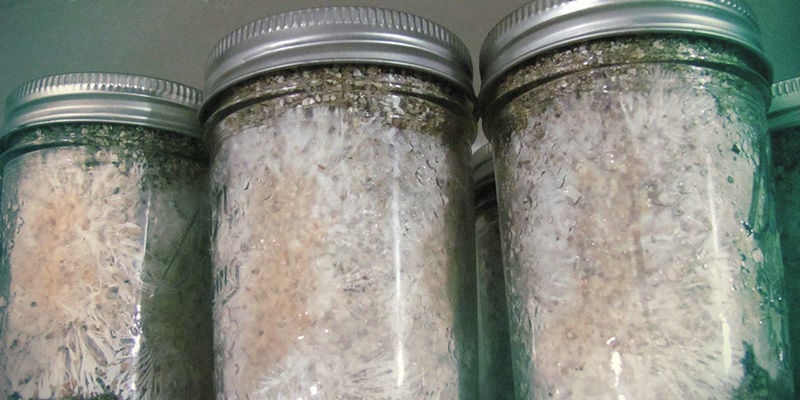
Also called Neurospora, it is a fast-growing fungus commonly found in agar and grain. Present everywhere in nature, this contaminant grows through cotton stoppers and filter discs and is very hard to eliminate. Contaminated cultures should be destroyed immediately and a thorough cleaning of the laboratory is necessary.
BLACK MOLD (ALSO YELLOW MOLD AND OTHERS)
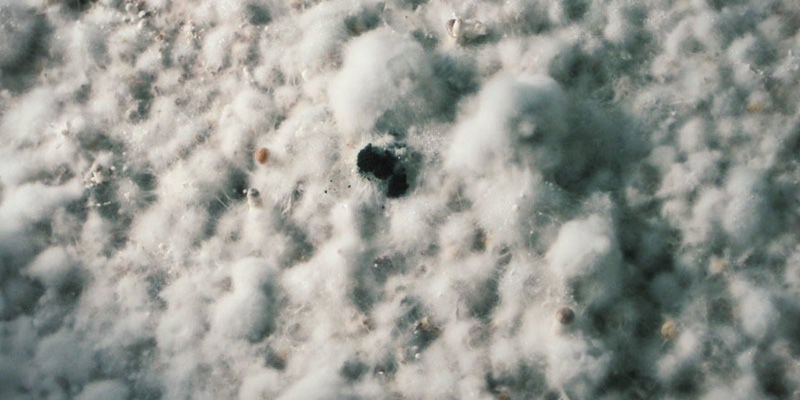
These fungi are very common in agar and grain cultures, as they are found on almost any organic substrate. Called Aspergillus, it prefers a near neutral to slightly basic pH and species range in colour from black to yellow. Some of these species are toxic and produce deadly aflatoxins, so they should be handled with special care.
DRY BUBBLE
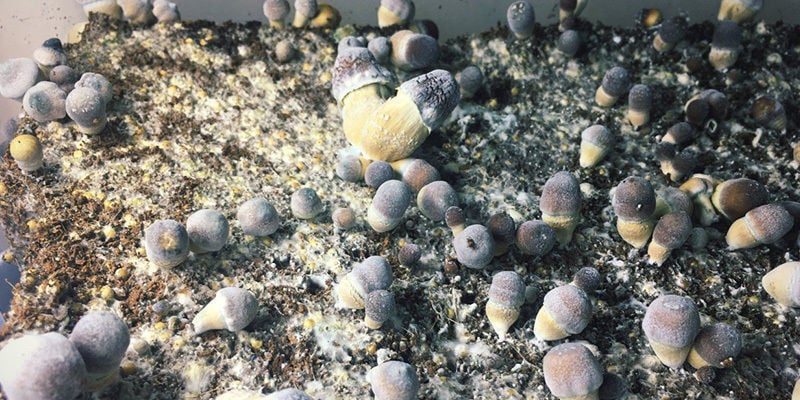
A disease caused by the Verticillium species of fungi, which produce sticky spores. Symptoms of the disease vary with stage of development. Early infection leads to the production of deformed pinheads and infection at a later stage leads to a crooked mushroom with a tilted cap.
As the spores are sticky, they spread via dust particles and one should be careful of moving soil near mushroom houses. Other methods of control are the prevention of flies entering the aforementioned mushroom houses and putting table salt on top of tissue paper which should contain the disease.
FUNGUS GNATS
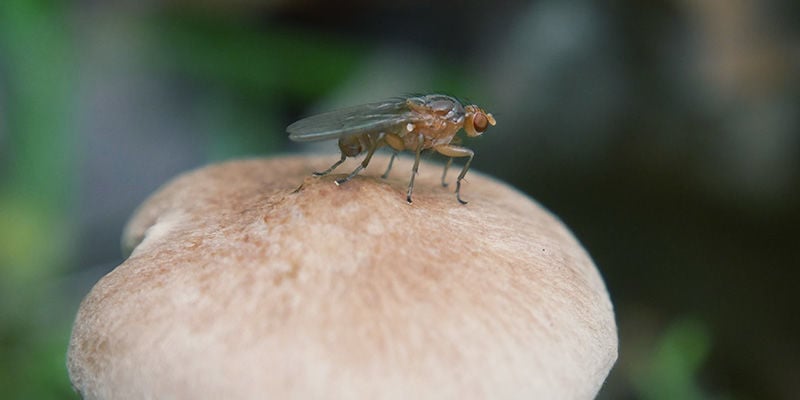
Tiny, flying insects, that are attracted to the mushroom crop. They feed on the mycelium and tunnel into the mushrooms. Tissues, that have been damaged by the gnats are often overrun with bacteria, which cause soft rot.
Adults are 0.3cm long, grayish to black flies, whose wings are clear with no pattern and few distinct veins. Strict sanitation and general hygiene are the way to go concerning control of these contaminants.
MITES
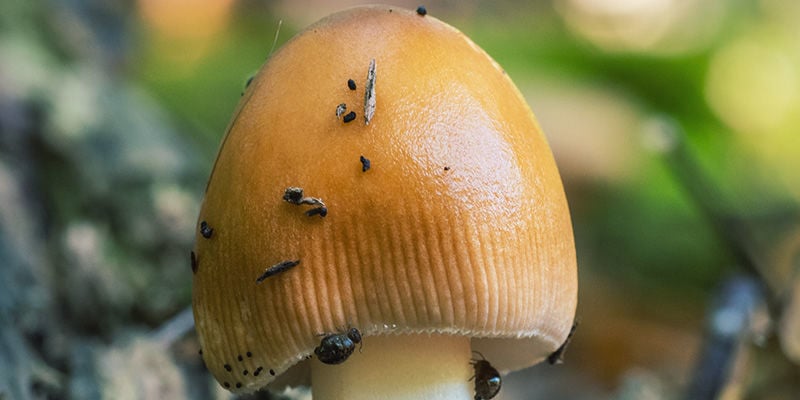
Small arthropods commonly found in straw and manure. Most species of mites are beneficial to mushroom growing, as they feed on eelworms and other mites and are actively engaged in the fragmentation and mixing of the organic substrate.
However, there are few, that can cause damage. They feed on the mushroom mycelium like the fungus gnats and may cause surface discolouration. Detailed sanitation and hygiene are key in controlling these contaminants, as any other.
This covers the most common contaminations you can come across in mushroom cultivation. If something is to be learned here, then it is, that a clean environment and careful handling go a long way.
Shroom Shop
Zamnesia's Shroomshop offers an extensive selection of mushroom cultivation supplies, including spore prints, liquid cultures, grow kits, and much more.
Related Products
You might also like











 United States
United States



